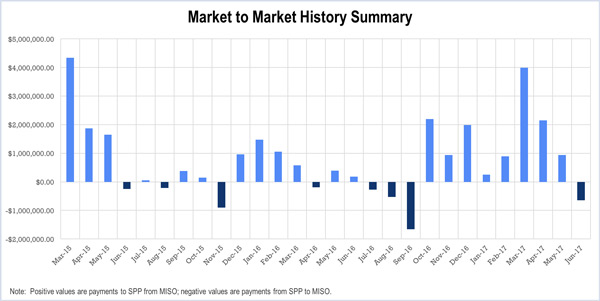NERC will host a webinar Aug. 25 to help the current members of SPP’s Regional Entity (RE) transition to new compliance authorities.
SPP said last month it would dissolve its RE, addressing NERC and FERC concerns about the RTO’s dual roles as a grid operator and reliability coordinator. Pending approval by the two regulatory bodies, the SPP RE will cease to exist by the end of 2018. (See SPP to Dissolve Regional Entity.)
The SPP RE’s trustees sent a letter to its members Friday, advising them that NERC will issue a formal announcement about the webinar “shortly.”
The trustees said NERC will “improve the quality of the information you are receiving” by managing the transition process going forward. The letter alludes to “confusion and perhaps inconsistent information flowing between you and the other regional entities involved in this transition.”
NERC is working with the 120 registered entities within the SPP footprint to transfer to other REs. It has asked the entities to select a new RE by Sept. 29. All changes must be approved by NERC’s independent Board of Trustees, then filed with FERC for its approval.
Committee Recommends Interregional Project Approval
The Seams Steering Committee last week recommended that SPP’s Economic Studies Working Group (ESWG) approve an interregional project with MISO in South Dakota, following a regional review.
The project, which loops a Split Rock-Lawrence 115-kV circuit into Sioux Falls to relieve congestion on the Lawrence-Sioux Falls 115-kV line, has been endorsed by the RTOs’ Interregional Planning Stakeholder Advisory Committee. The project is shared by the Western Area Power Administration in SPP and Xcel Energy in MISO. (See “Interregional Project Begins Regional Review,” SPP SSC Briefs: June 14, 2017.)
MISO would pay 81.48% of the project’s estimated $6.15 million in engineering and construction costs, with SPP covering the remainder.
Staff said the scope of the ESWG regional review was amended to evaluate opening the 115-kV line between Sioux Falls and Lawrence. However, staff’s analysis found that option did not provide SPP with positive benefits across all sensitivities and could potentially create congestion on different constraints in the area.
The SSC refrained from voting on the project during its Aug. 9 meeting and will wait until the ESWG conducts its vote when it meets this week in Denver.
The SSC and ESWG are directing the regional review. They plan to make a final recommendation to the Markets and Operations Policy Committee in October.
Staff Addressing Historical Congestion on MISO Seam
The SSC also discussed staff’s early draft of a business practice to address historical market-to-market (M2M) congestion on the SPP-MISO seam.
Staff’s proposal, based on SPP’s business practice for non-FERC Order 1000 seams projects, would create a new project type for small, low-cost interregional upgrades with short lead times. These targeted market efficiency projects (TMEPs) would address locations with consistent congestion limiting the ability of lower-cost generation to reach load.
The TMEPs’ benefit determination method would avoid complicated production cost models and simulations, significantly reducing the analysis period and potentially allowing faster project implementation.
Stakeholders noted transmission owners could simply undertake the projects themselves as sponsored projects and suggested aligning the study timeline with the integrated transmission planning process or joint coordinated system plan, as MISO has done.
Staff said it would develop a list of the top 10 flowgates that could potentially qualify for TMEP treatment.
M2M Payments Reverse in MISO’s Favor
Continuing a summer trend seen since SPP and MISO began their M2M process in March 2015, payments between the two RTOs reversed themselves in June, with SPP paying its neighbor almost $644,774 for congestion on flowgates between the two.
Temporary flowgates accounted for most of the congestion, binding for 315 hours. That resulted in almost $1.1 million in M2M settlement charges to SPP, balanced somewhat by $453,321.84 in its favor for 190 hours in binding on permanent flowgates.
SPP has collected $21.7 million in M2M settlements from MISO, with much of that coming during the winter and shoulder months. MISO has collected payments during summer months, although in minimal amounts.
— Tom Kleckner





